Bánh mì thịt nướng, or Vietnamese grilled pork sandwich, is a variation of the traditional Vietnamese bánh mì. Its primary source of protein is grilled pork, which may or may not be shredded. The sandwich also contains pâté, mayonnaise, pickled vegetables, etc.
Bánh mì thịt nướng is an amazing breakfast item, street food, and midnight snack in Vietnam. Locals often buy the sandwich from street vendors; some like to prepare this superb Vietnamese sandwich at home. And I will instruct you on how they do it.
I will cover a few facts about the definition and categorization of bánh mì thịt nướng, the required tools and ingredients for preparing the sandwich, the instructions for making it, and tips and suggestions for similar dishes.
Vietnamese Grilled Pork Sandwich – A Well-loved Variation
Bánh mì thịt nướng is a simple yet flavorful Vietnamese dish. Its main ingredients are Vietnamese-style baguettes, marinated and grilled pork, pâté, mayonnaise, fresh and pickled vegetables, and other condiments. This sandwich version is widely available at many street food stalls.
The history of bánh mì began after the French introduced baguettes to Vietnam in the mid-19th century when the country fell under French colonial rule. Locals eventually figured out how to pair the bread with various traditional Vietnamese dishes, including grilled pork.
The term “thịt nướng” means “grilled meat,” and pork is the dominant choice of meat for this variation. Though you can find it everywhere in Vietnam, bánh mì thịt nướng is extremely easy to prepare at home, requiring only a few cooking tools.
What Tools Are Necessary to Make Bánh Mì Thịt Nướng?
The necessary tools for making a Vietnamese grilled pork sandwich are a knife, a pair of chopsticks, and a small spoon.
What Ingredients Do You Need to Prepare Bánh Mì Thịt Nướng?
To make bánh mì with grilled pork, you need to have the following ingredients:
How Do I Prepare Homemade Bánh Mì Thịt Nướng?
Preparing Vietnamese bánh mì with grilled pork involves only preparing the vegetables and assembling the sandwich from other ingredients. And it’s even much quicker if you already have cooked pork. Let me show you the exact instructions.
Step 1: Prepare the Vegetables
Rinse the vegetables and let them drain.
Cut the cucumber into ribbons or long sticks. Cut the scallions into long strips. Cut the chili peppers into little rings.
Step 2: Assemble the Pate
Use a sharp knife to slice open the baguette along its length. Don’t push the blade too deep, or you will pierce the other side and cut your baguette in half.
Use the knife to spread a suitable amount of pate onto the sides of the baguette, followed by a layer of Vietnamese-style mayonnaise.
With a pair of chopsticks, put the cucumber ribbons, scallion strips, cilantro, tomato slices, pickled vegetables, and chili pepper rings into the split baguette. Pour the garlic sauce over the filling, then add the shredded grilled pork.
Smear some chili sauce and mayonnaise onto the baguette. A common tip to improve the flavor of your treat is to adjust the amount of chili sauce.
Tips and Tricks When Making Bánh Mì Thịt Nướng
Apply below tricks to whip up a perfect grilled pork sandwich, including:
Alternatively, store the ingredients separately in airtight containers and only create the sandwich when needed. The baguettes, fillings, and condiments can be refrigerated for 3 days at most.
Enjoy Bánh Mì Thịt Nướng For A Wonderful Breakfast
Thousands and thousands of Vietnamese people have grilled pork sandwiches every morning, and it isn’t difficult to see why. The aroma of warm baguettes filled with tender grilled pork is too tempting to ignore. It’s among the most wonderful bánh mì recipes to grace Vietnam’s street food scene.
Now that you know how to prepare and serve your own bánh mì thịt nướng, I hope you will put your knowledge to good use. Feel free to share your cooking experience with me in the comment section. And please introduce this recipe to your friends if they’re interested in Vietnamese cuisine!
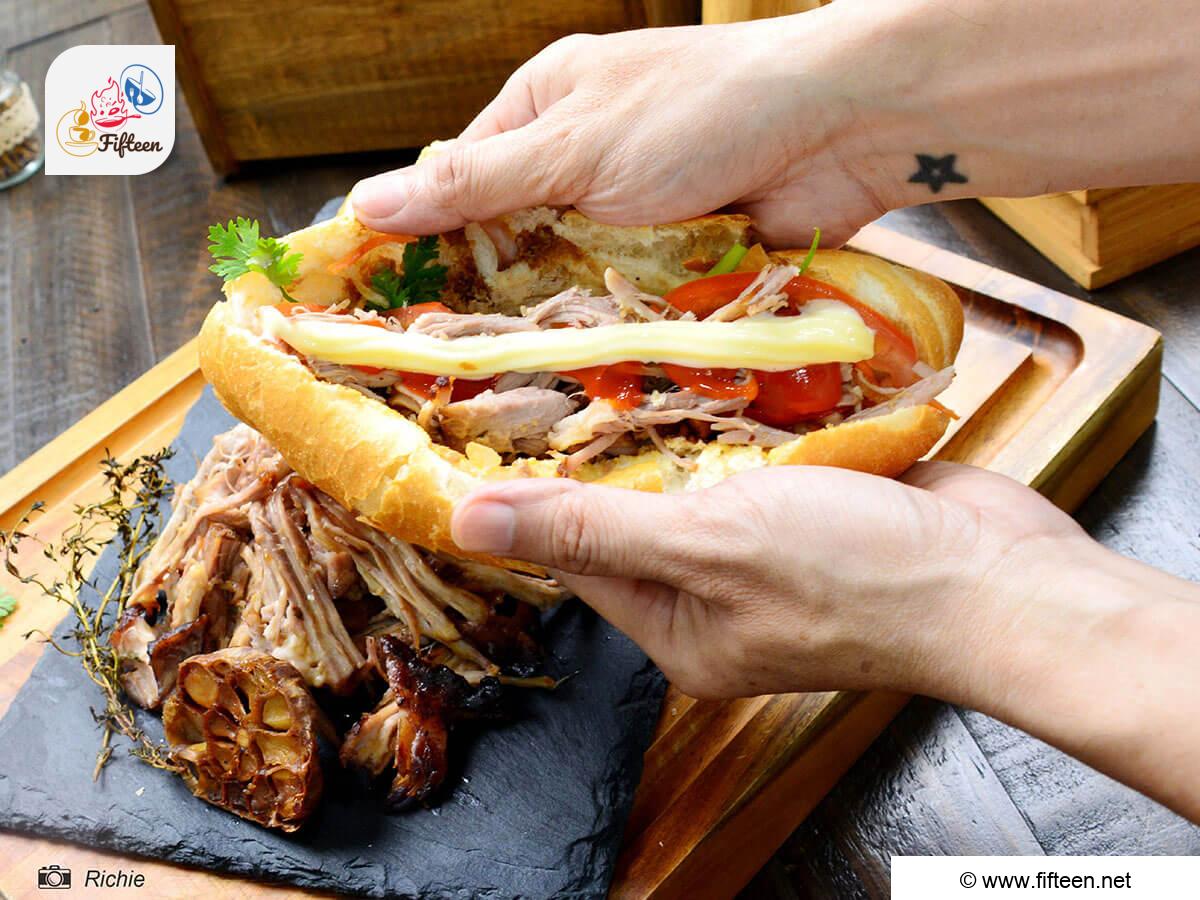
Bánh Mì Thịt Nướng Recipe (Vietnamese Grilled Pork Sandwich)
Equipment
- Knife
- Spoon and Chopstick
Ingredients
- 7.05 ounces grilled pork
- 1.06 ounces pork liver pâté
- 1.06 ounces Vietnamese-style mayonnaise
- 2.54 fluid ounces garlic sauce
- 3.52 ounces Vietnamese pickles
- 2 Vietnamese baguettes
- Chili sauce and mayonnaise to taste
- Optional vegetables: cucumbers, scallions, cilantro, tomatoes, etc.
Instructions
- Rinse the vegetables and let them drain. Cut the cucumber into ribbons or long sticks. Cut the scallions into long strips. Cut the chili peppers into little rings.
- Use a sharp knife to slice open the baguette lengthwise.
- Use the knife to spread a suitable amount of pâté and Vietnamese-style mayonnaise onto the sides of the baguette.
- Use a pair of chopsticks to put the cucumber ribbons, scallion strips, cilantro, tomato slices, pickled vegetables, and chili pepper rings into the split baguette.Pour the garlic sauce over the filling, then add the shredded grilled pork.
- Smear some chili sauce and mayonnaise onto the baguette. Enjoy!
Video
Notes
- The estimated time and instructions are for preparing 2 servings.
- Reheat the baguettes before making bánh mì thịt nướng
- Feel free to use other types of pork, such as pork butt, pork belly, or pork loin.
- Serve your treat as soon as possible.
- Enjoy the sandwich with Vietnamese coffee.
- Adjust the spice level by adding more or less chili peppers.



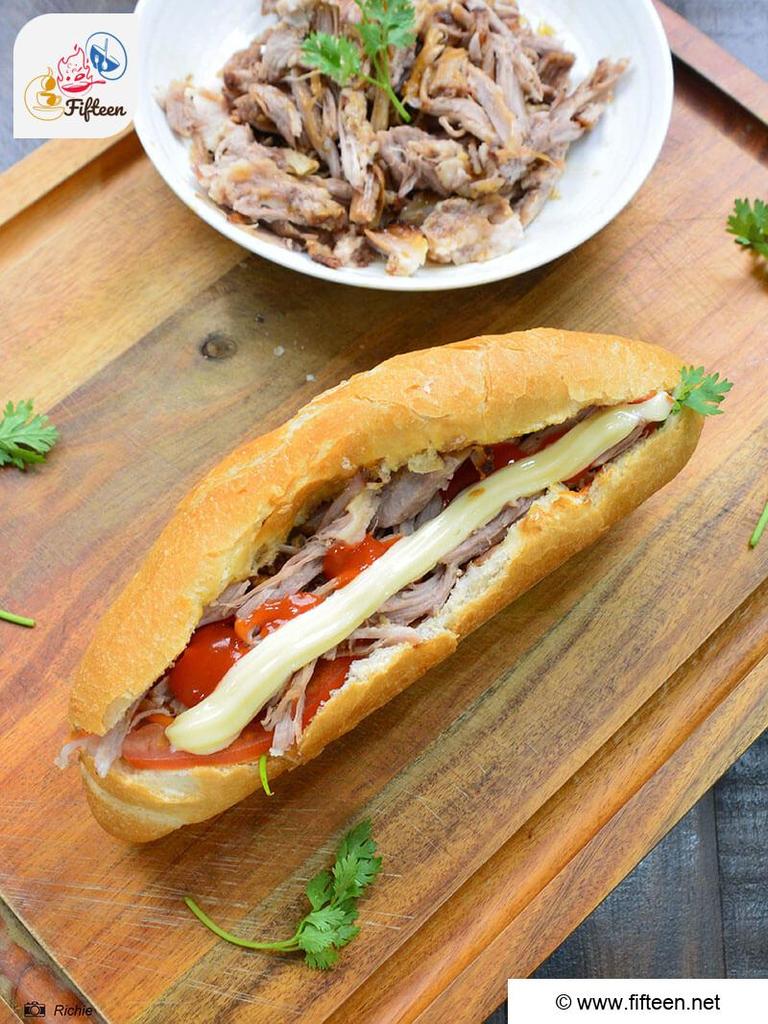
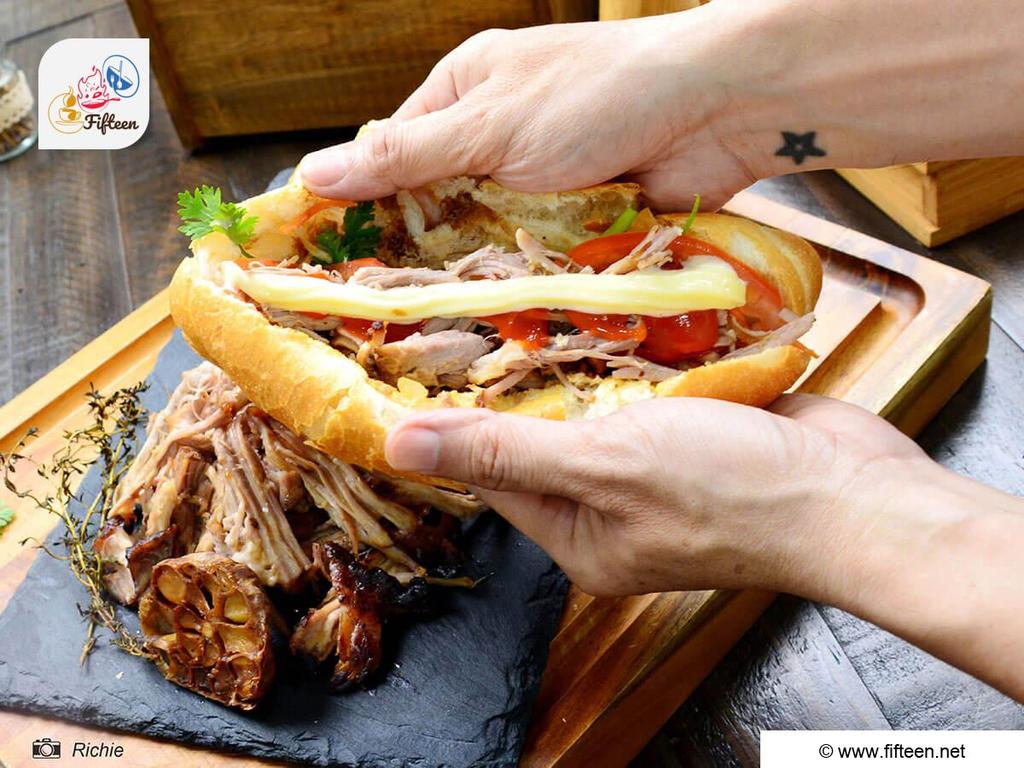
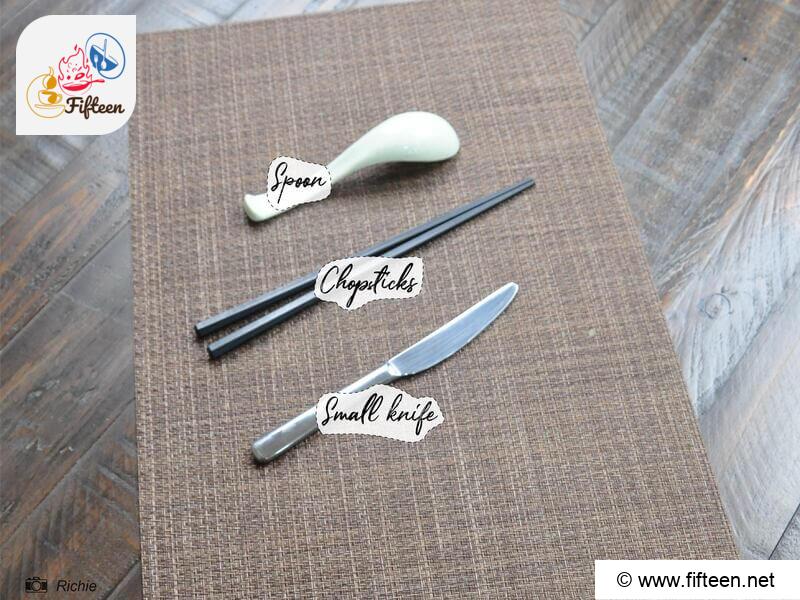
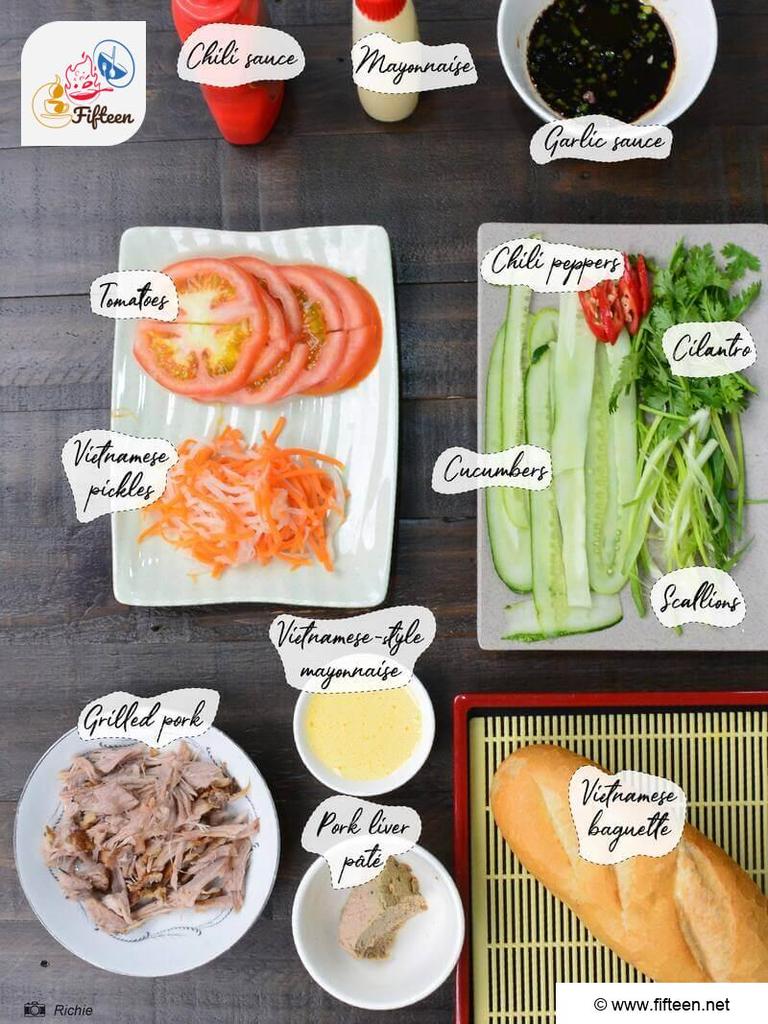
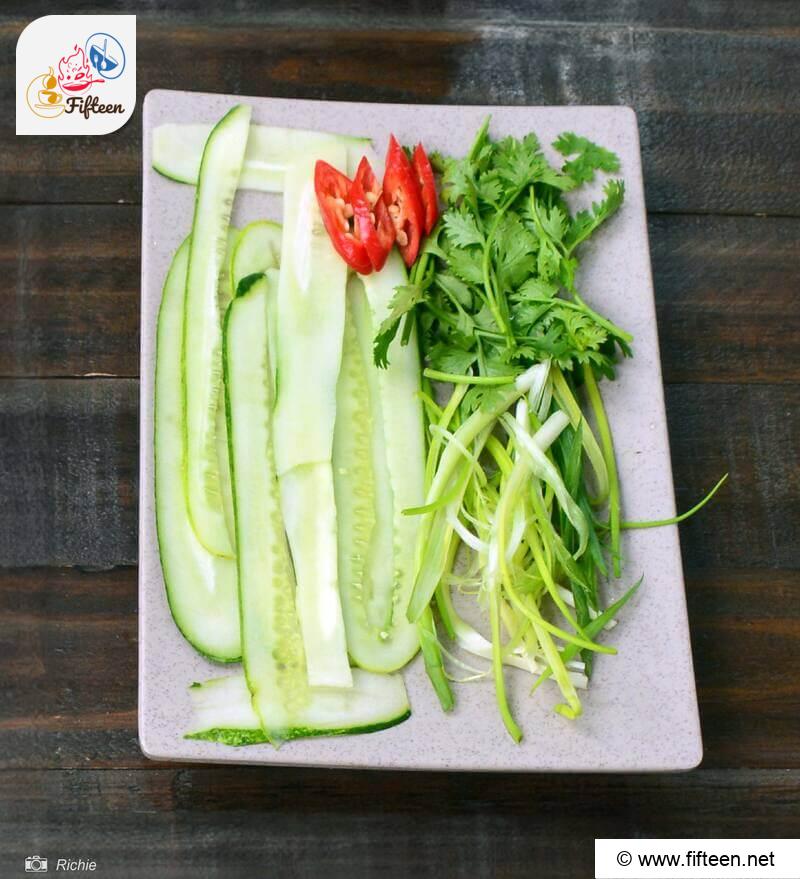
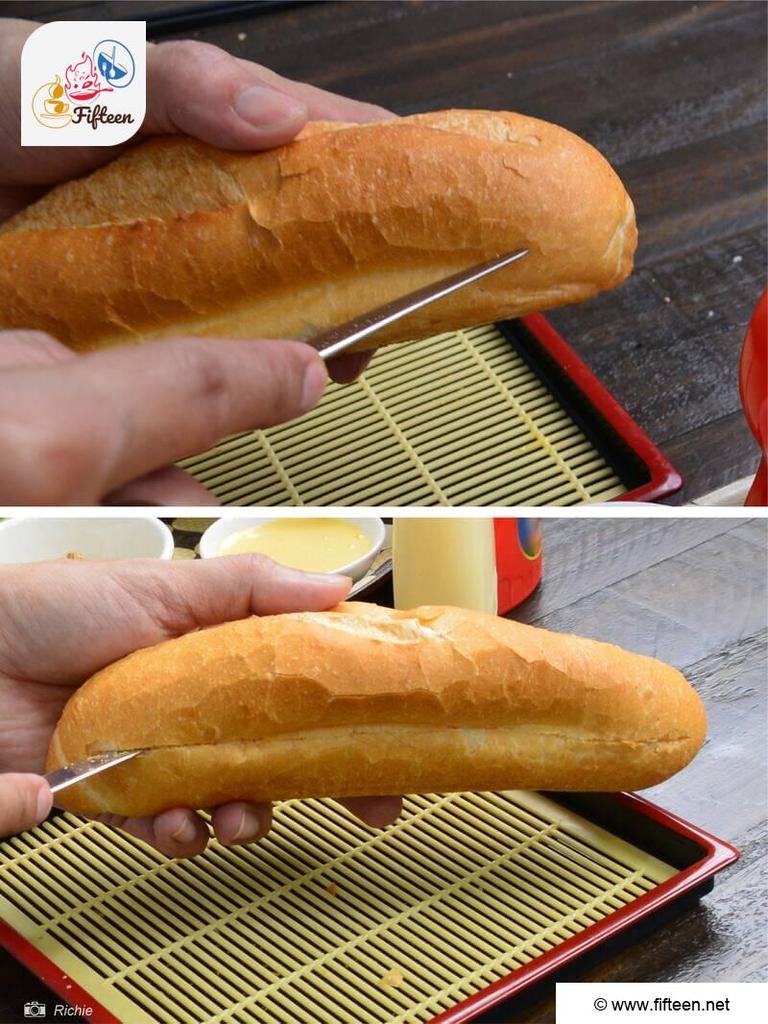
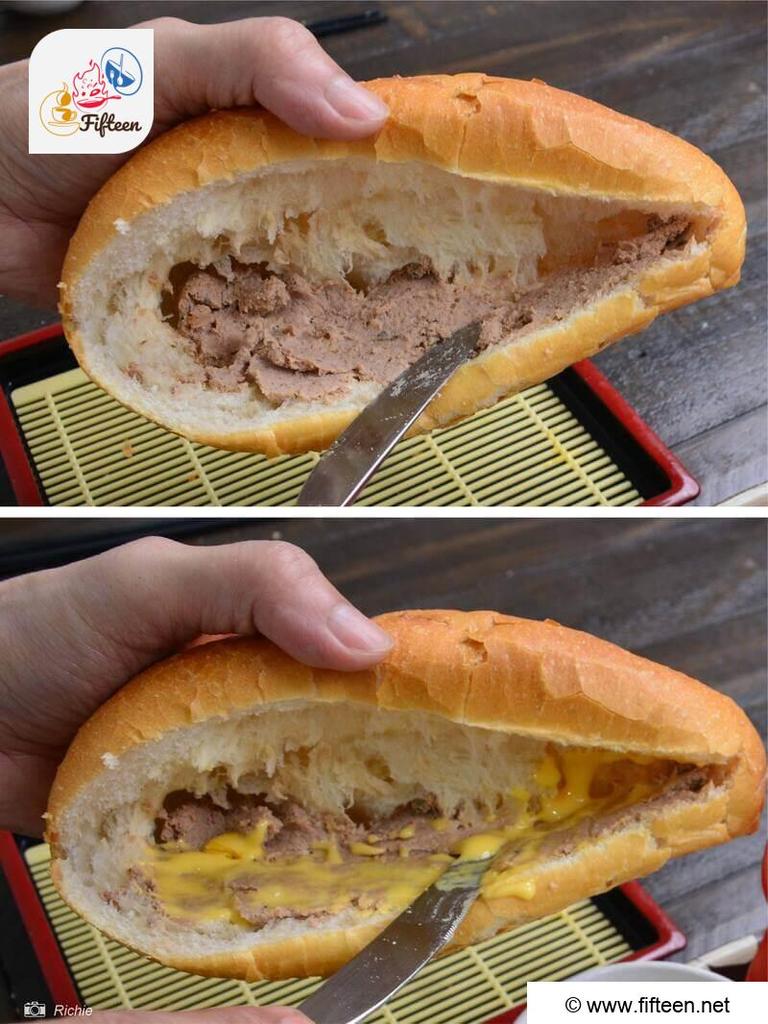
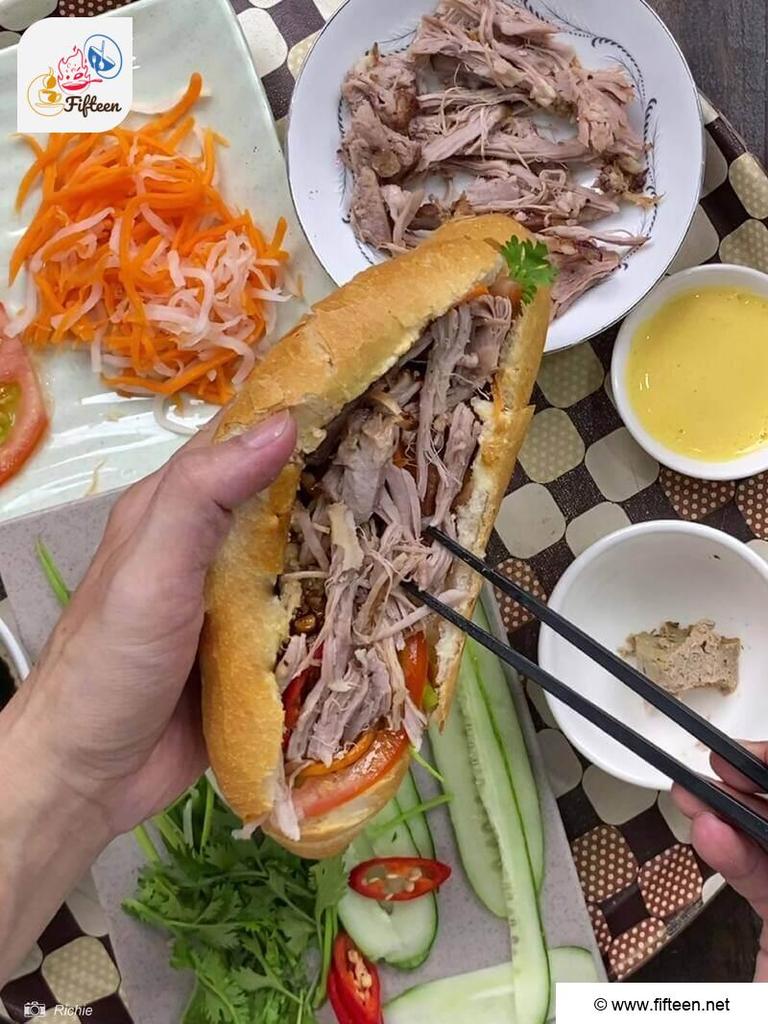
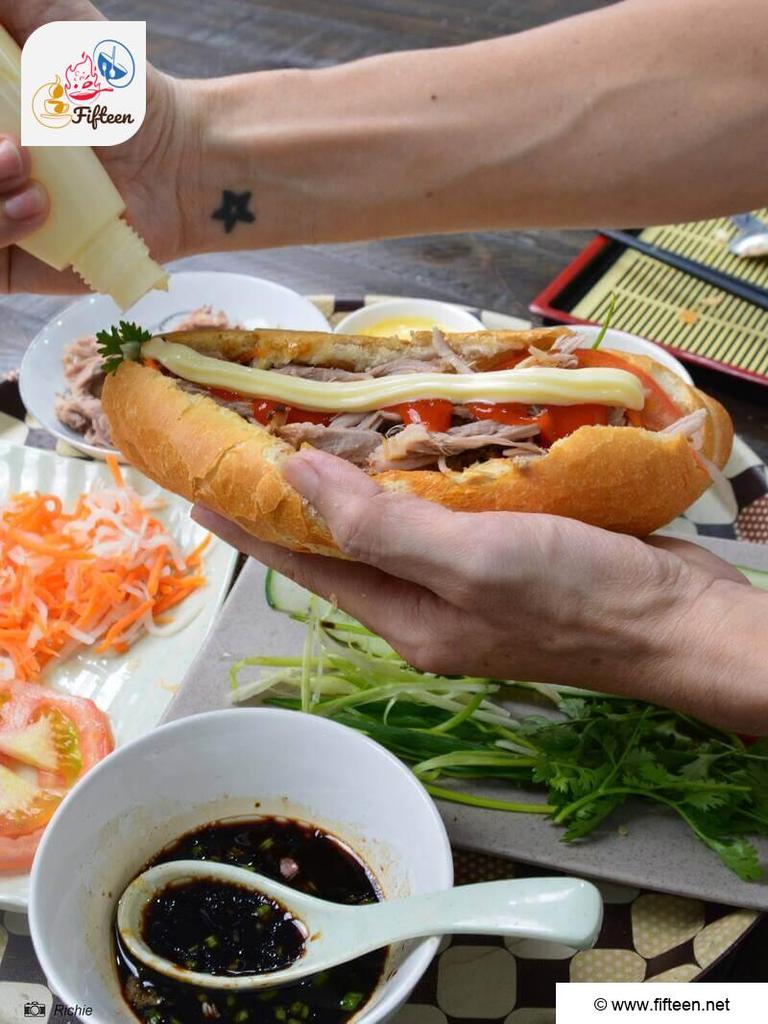
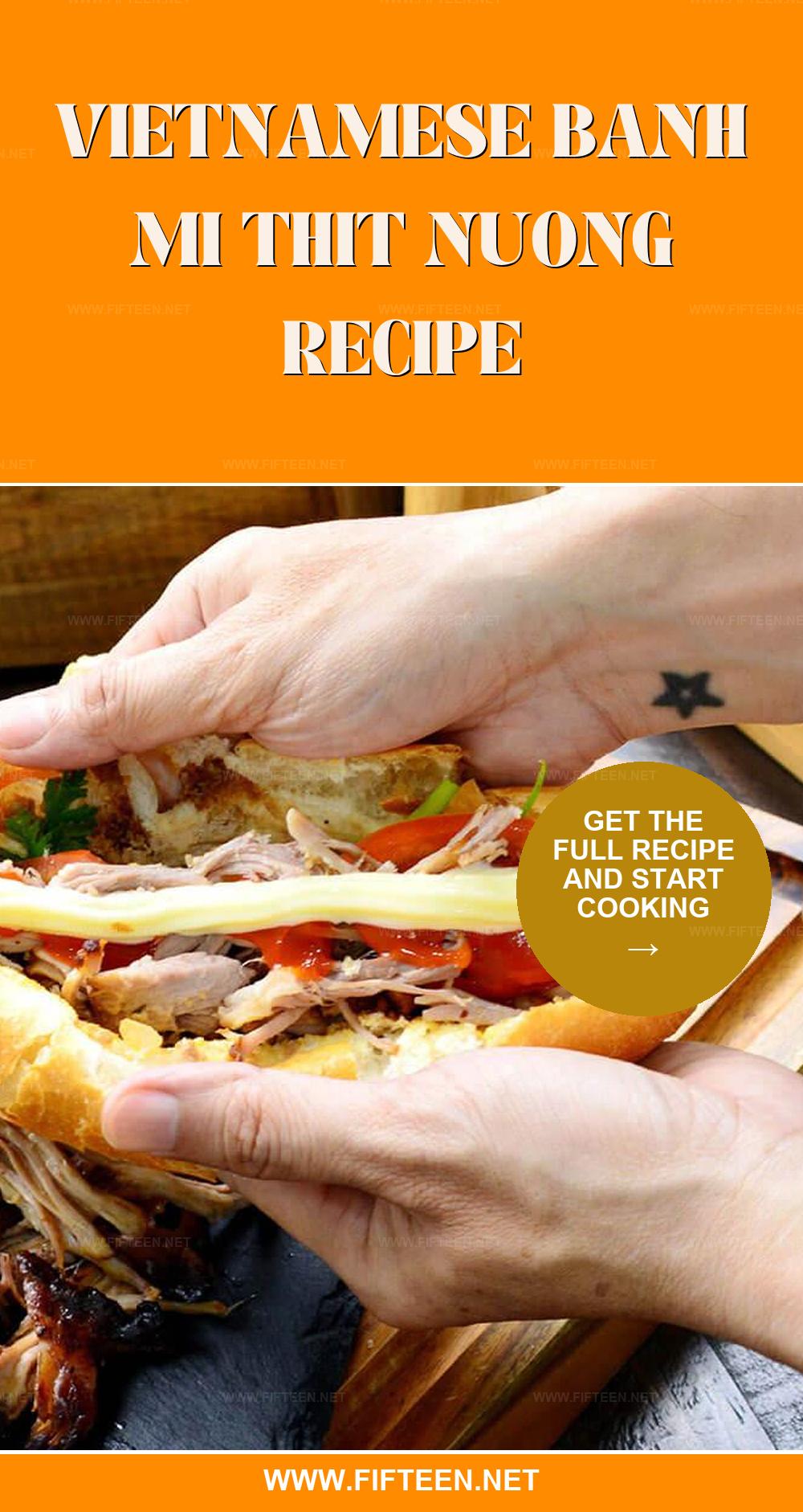
Richie
Content Writer
Expertise
Home Cooking, Meal Planning, Food Styling, Food Photography, Cooking-video Maker, Beverage Evaluation Expert
Education
Saigon Culinary Arts Centre, Ho Chi Minh City, Vietnam
Vietnam Australia Vocational School (VAAC), Hanoi, Vietnam
Richie, based in Ho Chi Minh City, Vietnam, is a dynamic Content Writer with a talent for capturing the essence of culinary art.
Richie specializes in creating visually appealing and tasty content, offering a new angle on Vietnamese and other culinary traditions. With a background in graphic design and a love for food styling and photography, he expertly combines beauty with food narratives, encouraging his audience to discover the culinary world through his imaginative perspective.